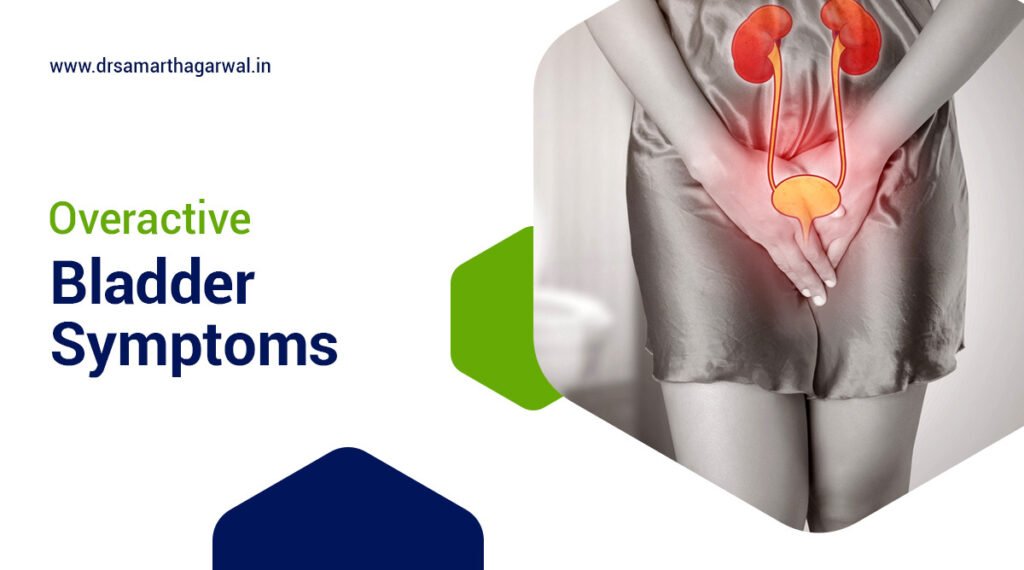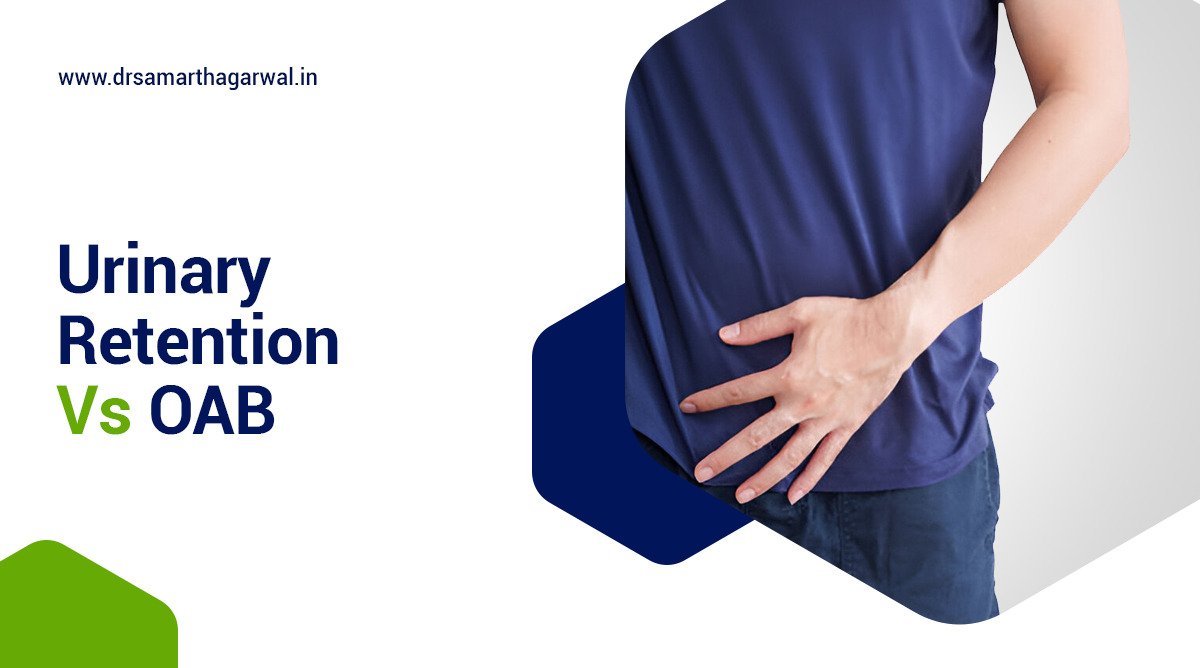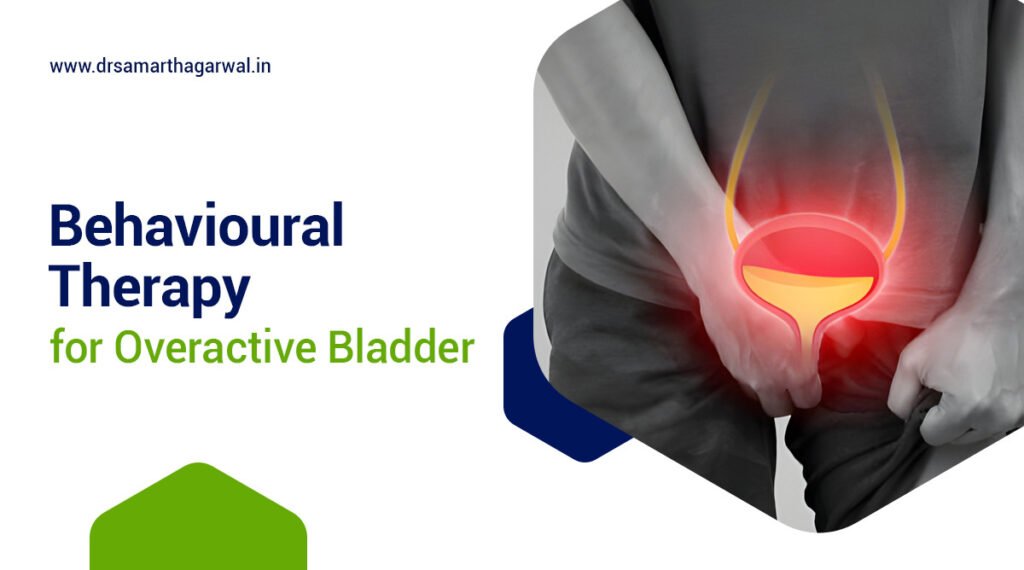Urinary Retention vs. Overactive Bladder: Understanding the Distinctions and Implications
Urinary retention and overactive bladder (OAB) are two distinct urinary conditions that can significantly affect an individual’s quality of life. Understanding the differences between these two conditions is crucial for effective diagnosis and treatment. This article will explore the definitions, symptoms, causes, diagnostic procedures, treatment options, and the psychological implications of both urinary retention and OAB.
Here is a quick overview:
| Aspect | Urinary Retention | Overactive Bladder |
| Symptoms | Inability to empty bladder completely, weak urine stream, difficulty starting urination, sensation of incomplete emptying | Sudden, strong urge to urinate, frequent urination (8+ times per day), urge incontinence |
| Causes | Obstruction (e.g., enlarged prostate), nerve issues, weak bladder muscles | Involuntary bladder muscle contractions, neurological disorders, bladder infections, certain medications |
| Diagnosis | Urodynamic testing, measuring post-void residual urine, imaging studies to identify structural abnormalities | Bladder diary, ruling out urinary tract infections, evaluating symptoms |
| Treatment | Catheterization, medication (e.g., alpha-blockers), surgery (e.g., TURP, urethral dilation) to relieve obstructions | Behavioral therapies (e.g., bladder training, pelvic floor exercises), medication (e.g., anticholinergics, beta-3 adrenergic agonists), neuromodulation techniques (e.g., sacral neuromodulation, PTNS) |
| Lifestyle Modifications | Fluid management, scheduled voiding, pelvic floor exercises, avoiding bladder irritants | Dietary changes, regular exercise, weight management, avoiding bladder irritants |
| Emotional Impact | Anxiety, depression, social withdrawal, fear of inability to empty bladder | Anxiety, depression, social withdrawal, fear of incontinence or urgency in public settings |
| Support Networks | Family, friends, healthcare providers, open communication, peer support groups | Family, friends, healthcare providers, open communication, peer support groups |
Defining Urinary Retention
Urinary retention is the inability to completely empty the bladder, leading to the accumulation of urine. This condition can be acute, with a sudden inability to urinate, or chronic, with gradual development and significant residual urine. Urinary retention can result from various underlying issues, such as urethral obstruction, weakened bladder muscles, or neurological conditions.
Untreated urinary retention can lead to complications like urinary tract infections and bladder damage. It is essential for individuals experiencing difficulty in urination to seek medical advice, as understanding the nature of urinary retention is crucial for developing appropriate treatment strategies.
Defining Overactive Bladder (OAB)
Overactive bladder (OAB) is characterized by a sudden, uncontrollable urge to urinate, often accompanied by increased urinary frequency and, in some cases, urge incontinence. Individuals with OAB may experience the need to urinate frequently, disrupting daily activities and sleep. The condition is caused by an overactive bladder muscle, leading to involuntary contractions and a strong urge to urinate, even when the bladder is not full.
OAB can affect individuals of all ages, but it is more prevalent among older adults. The condition can be caused by various factors, including neurological disorders, bladder infections, and certain medications. Understanding OAB is vital for effective diagnosis and treatment, as it can lead to significant emotional and social challenges. Proper management can greatly improve an individual’s quality of life and bladder control.
Importance of Distinguishing Between the Two Conditions
Distinguishing between urinary retention and overactive bladder is essential for effective diagnosis and treatment. While both conditions involve bladder function, their underlying causes, symptoms, and treatment options differ significantly. Misdiagnosis can lead to inappropriate treatment, worsening symptoms, and potential complications. For instance, treating urinary retention with medications intended for OAB may not address the underlying cause of retention, leading to further complications.
Furthermore, understanding these distinctions can help healthcare providers tailor treatment plans to meet the specific needs of the patient. For example, a urologist may recommend catheterization techniques for urinary retention, while behavioral therapies may be more appropriate for managing OAB symptoms. By recognizing the differences between these two conditions, healthcare professionals can provide more effective care, ultimately improving patient outcomes and quality of life.
Symptoms and Causes
Common Symptoms of Urinary Retention
General Symptoms:
- Weak or interrupted urine stream
- Difficulty initiating urination
- Sensation of incomplete bladder emptying
- Discomfort or pain in the lower abdomen (as bladder fills with residual urine)
Acute Symptoms:
- Inability to urinate (can lead to severe pain)
- Medical emergency requiring immediate intervention
Chronic Symptoms:
- Frequent urinary tract infections
- Inability to empty the bladder completely
- Increased pressure and discomfort in the bladder
- Bladder distension (may cause additional complications over time)
Common Symptoms of Overactive Bladder
- Sudden and uncontrollable urge to urinate
- Frequent urination during the day and night
- Urge incontinence (in some cases)
- Overwhelming need to urinate even when the bladder is not full, leading to potential accidents and embarrassment
- Symptoms can significantly impact daily life, causing anxiety and social withdrawal due to the fear of incontinence episodes
- Urge to urinate can occur unexpectedly, disrupting activities and sleep patterns
- Emotional toll of living with OAB can lead to decreased quality of life
- Understanding the symptoms of overactive bladder is crucial for timely diagnosis and effective management, allowing individuals to regain control over their bladder function and improve their overall well-being.

Underlying Causes of Urinary Retention
Urinary retention can arise from various underlying causes, including mechanical obstructions, neurological disorders, and weakened bladder muscles. Understanding these underlying causes is essential for healthcare providers to develop appropriate treatment strategies. By addressing the root cause of urinary retention, patients can achieve better bladder function and minimize complications associated with this condition.
- Mechanical obstructions:
- Enlarged prostate in men
- Urinary tract infections
- Bladder stones
- Strictures in the urethra
- Neurological disorders:
- Multiple sclerosis
- Spinal cord injuries
- Weakened bladder muscles
- Certain medications, particularly those with anticholinergic properties, can contribute to urinary retention by affecting bladder muscle function.
Underlying Causes of Overactive Bladder
Overactive bladder can be caused by a variety of factors that affect bladder function. Understanding these underlying causes is crucial for effective diagnosis and treatment. By identifying the factors contributing to overactive bladder, healthcare providers can tailor treatment plans to address the specific needs of the patient, ultimately improving bladder control and quality of life.
- Neurological disorders:
- Multiple sclerosis
- Parkinson’s disease
- Bladder infections or inflammation, which can irritate the bladder wall and trigger the urge to urinate frequently.
- Lifestyle factors:
- Excessive caffeine consumption
- Excessive alcohol consumption
- Anatomical abnormalities:
- Bladder stones
- Bladder tumors
Diagnosis and Assessment
Diagnosing urinary retention typically involves a comprehensive assessment, including medical history, symptoms, and physical examination. Urodynamic testing is often used to evaluate bladder function and determine the underlying cause, measuring how well the bladder fills and empties. Imaging studies, such as ultrasound, may also be considered to identify any structural abnormalities. A thorough diagnosis is essential to develop an effective, personalized treatment plan and manage urinary retention and its associated complications.
Diagnostic Procedures for Urinary Retention
Diagnostic procedures for urinary retention often begin with a detailed medical history and physical examination. Urodynamic testing is a key diagnostic tool that assesses bladder function by measuring pressure and flow rates during filling and emptying phases. This testing helps determine whether the bladder muscle is functioning properly or if there are issues with the sphincter mechanism. Additionally, residual urine measurement is performed to evaluate how much urine remains in the bladder after urination, providing insight into the severity of the condition.
Healthcare providers may also utilize imaging techniques, such as ultrasound or CT scans, to visualize the urinary tract and identify any obstructions or abnormalities. These diagnostic procedures are essential for accurately diagnosing urinary retention and developing a targeted treatment plan. By understanding the underlying causes of urinary retention, healthcare professionals can implement effective interventions to improve bladder function and alleviate symptoms.
Urodynamic Testing
Urodynamic testing is a specialized diagnostic procedure that evaluates bladder function by measuring various parameters during the filling and emptying phases of urination. This testing can help identify issues with bladder muscle activity, sphincter control, and overall bladder function. During the procedure, a catheter is inserted into the bladder to measure pressure and flow rates, providing valuable information about how well the bladder is working. Urodynamic testing is particularly useful for diagnosing urinary retention, as it can reveal whether the bladder is unable to contract effectively or if there are obstructions in the urinary tract.
Additionally, urodynamic testing can help differentiate between various types of urinary conditions, allowing healthcare providers to tailor treatment plans accordingly. The results of this testing can guide decisions regarding medications, catheterization techniques, or surgical interventions, ultimately improving patient outcomes. Understanding the role of urodynamic testing is essential for both patients and healthcare providers in the diagnostic process.
Residual Urine Measurement
Residual urine measurement is a crucial diagnostic procedure used to assess the amount of urine left in the bladder after urination. This measurement is typically performed using ultrasound or catheterization techniques. By determining the volume of residual urine, healthcare providers can evaluate the severity of urinary retention and identify potential underlying causes. A significant amount of residual urine may indicate that the bladder is not emptying effectively, which can lead to complications such as urinary tract infections and bladder distension.
Understanding residual urine measurement is essential for developing appropriate treatment strategies. If a patient is unable to empty their bladder completely, healthcare providers may recommend interventions such as catheterization or medications to improve bladder function. By accurately assessing residual urine, healthcare professionals can implement targeted treatments to enhance bladder control and alleviate symptoms associated with urinary retention.
Diagnostic Procedures for Overactive Bladder
Diagnosing overactive bladder involves a comprehensive evaluation of the patient’s symptoms, medical history, and lifestyle factors. One effective method for assessing OAB is keeping a bladder diary, where patients record their urination patterns, fluid intake, and any episodes of urge incontinence. This diary provides valuable insights into the frequency and severity of symptoms, helping healthcare providers diagnose overactive bladder accurately.
Additionally, healthcare providers may conduct a thorough evaluation for urinary tract infections, as these infections can mimic or exacerbate overactive bladder symptoms. Laboratory tests, including urinalysis and urine culture, can help identify any underlying infections that may be contributing to the patient’s symptoms. By utilizing these diagnostic procedures, healthcare professionals can develop an effective treatment plan tailored to the individual’s needs, ultimately improving bladder control and quality of life.
Keeping a Bladder Diary
Keeping a bladder diary is a valuable diagnostic tool for individuals experiencing symptoms of overactive bladder. This diary allows patients to track their urination patterns, fluid intake, and any episodes of urge incontinence over a specified period, typically three to seven days. By documenting these details, patients can provide healthcare providers with essential information regarding the frequency and severity of their bladder symptoms. This data is instrumental in diagnosing overactive bladder and determining the most appropriate treatment options.
Moreover, a bladder diary can help identify potential triggers for overactive bladder symptoms, such as specific foods, beverages, or activities. By understanding these triggers, patients can make informed lifestyle modifications to manage their symptoms more effectively. Overall, keeping a bladder diary is an essential step in the diagnostic process for overactive bladder, enabling healthcare providers to develop tailored treatment plans that address the individual’s unique needs.
Urinary Tract Infection Evaluation
Evaluating for urinary tract infections (UTIs) is a critical component of diagnosing overactive bladder, as UTIs can mimic or exacerbate OAB symptoms. Healthcare providers typically conduct a thorough assessment, including a urinalysis and urine culture, to identify the presence of bacteria or other pathogens in the urine. A UTI can lead to increased urgency, frequency, and discomfort during urination, making it essential to rule out this underlying cause before diagnosing overactive bladder.
In cases where a UTI is identified, appropriate treatment, such as antibiotics, may be necessary to resolve the infection and alleviate symptoms. Once the infection is treated, healthcare providers can reassess the patient’s bladder function to determine if OAB symptoms persist. Understanding the relationship between UTIs and overactive bladder is crucial for accurate diagnosis and effective management, ensuring that patients receive the appropriate care for their urinary conditions.
Role of Urologists in Diagnosis
Urologists are the specialists responsible for diagnosing and managing urinary conditions, such as urinary retention and overactive bladder. They conduct comprehensive assessments, including physical examinations, medical history reviews, and specialized tests, to identify the underlying issues. Based on their findings, urologists develop tailored treatment plans, which may involve a combination of behavioral therapies, medications, or surgical interventions, to address the specific needs of each patient and improve bladder function.
Diagnostic and Treatment Procedures Utilized by Urologists:
- Physical examinations
- Medical history reviews
- Urodynamic testing
- Residual urine measurement
- Imaging studies (e.g., ultrasound)
- Behavioral therapies
- Medication management
- Surgical interventions (if necessary)
Treatment Options
Treatment options for urinary retention and overactive bladder vary significantly due to the distinct nature of these conditions. For urinary retention, the primary goal is to restore the ability to empty the bladder effectively.
Catheterization techniques are often employed to relieve acute urinary retention, allowing for immediate drainage of urine. In chronic cases, medications may be prescribed to improve bladder muscle function or address underlying causes, such as prostate enlargement in men.
On the other hand, treating overactive bladder focuses on managing symptoms and improving bladder control. Behavioral therapies, such as bladder training and pelvic floor muscle exercises, can help individuals regain control over their urination patterns.
Medications specifically designed to treat OAB symptoms may also be prescribed to reduce urgency and frequency. Understanding the appropriate treatment options for each condition is essential for effective management and improved quality of life.

Treatment for Urinary Retention
Treatment for urinary retention primarily aims to restore the ability to empty the bladder effectively. One common approach is catheterization, where a catheter is inserted into the bladder to allow for immediate drainage of urine. This technique is particularly useful in acute cases of urinary retention, providing quick relief from discomfort and preventing complications such as urinary tract infections. In chronic cases, healthcare providers may prescribe medications that enhance bladder muscle function or address underlying conditions, such as benign prostatic hyperplasia in men.
In some instances, surgical interventions may be necessary to remove obstructions or repair anatomical abnormalities contributing to urinary retention. For example, procedures to reduce prostate size or correct urethral strictures may be indicated. By implementing these treatment options, healthcare providers can help patients regain bladder control and improve their overall quality of life. Understanding the various treatment modalities available for urinary retention is crucial for effective management of this condition.
Catheterization Techniques
Catheterization techniques are essential for managing urinary retention, particularly in acute cases where immediate relief is necessary. A catheter is a flexible tube inserted into the bladder through the urethra, allowing for the drainage of urine. There are various catheterization methods, including intermittent catheterization, where the catheter is inserted and removed periodically, and indwelling catheterization, where a catheter remains in place for an extended period. The choice of technique depends on the patient’s specific needs and the underlying cause of urinary retention.
Intermittent catheterization is often preferred for individuals with chronic urinary retention, as it allows for regular emptying of the bladder without the risks associated with long-term indwelling catheters. Healthcare providers may also provide training to patients on self-catheterization techniques, empowering them to manage their condition effectively. Understanding catheterization techniques is crucial for both patients and healthcare providers in the management of urinary retention and ensuring optimal bladder function.
Medications and Surgical Interventions
Medications and surgical interventions play a significant role in the treatment of urinary retention, particularly in chronic cases. Medications may be prescribed to improve bladder muscle function, such as alpha-blockers for men with prostate enlargement, which can help relax the bladder neck and facilitate urine flow. Additionally, anticholinergic medications may be utilized to address bladder overactivity, although their use must be carefully monitored to avoid exacerbating retention symptoms.
In cases where medications are insufficient, surgical interventions may be necessary to address anatomical abnormalities or obstructions contributing to urinary retention. Procedures such as transurethral resection of the prostate (TURP) or urethral dilation can help alleviate blockages and restore normal bladder function. By combining medications and surgical options, healthcare providers can develop comprehensive treatment plans tailored to the individual needs of patients, ultimately improving their bladder control and quality of life.
Treatment for Overactive Bladder
Effective management of overactive bladder often includes a combination of behavioral therapies, medications, and neuromodulation techniques. These strategies work together to reduce urgency and frequency of urination, helping individuals regain control over their bladder function and enhance their daily activities.
Behavioral Therapies
Behavioral therapies are effective strategies for managing overactive bladder (OAB) symptoms. These therapies include bladder training, pelvic floor muscle exercises, and lifestyle modifications. Bladder training involves scheduled voiding to gradually increase the time between urinations. Pelvic floor muscle exercises strengthen the muscles that support bladder control, reducing urgency and frequency. Lifestyle modifications, such as fluid management and dietary changes, further enhance bladder health.
Medications for OAB
Medications for overactive bladder provide significant relief from symptoms. Anticholinergic medications, such as oxybutynin and tolterodine, block involuntary bladder contractions and reduce urgency. Beta-3 adrenergic agonists, like mirabegron, relax the bladder muscle and increase storage capacity. These medications improve quality of life by decreasing the frequency of bathroom visits and nighttime awakenings.
Neuromodulation Techniques
Neuromodulation techniques offer innovative solutions for treating overactive bladder. Sacral neuromodulation involves implanting a device that stimulates the sacral nerves, which control bladder function. This technique reduces urgency and improves bladder control in patients who do not respond to medications. Percutaneous tibial nerve stimulation (PTNS) is a less invasive option that stimulates the tibial nerve to modulate bladder activity. Both techniques provide effective alternatives for individuals with persistent OAB symptoms.
Comparing Treatment Approaches for Both Conditions
Treatment approaches for urinary retention and overactive bladder (OAB) differ significantly due to the underlying mechanisms of each condition. For urinary retention, the primary focus is on restoring effective bladder emptying through methods such as catheterization, medications to enhance bladder muscle function, and surgical interventions to address anatomical obstructions. In contrast, OAB management emphasizes reducing urgency and frequency of urination through behavioral therapies, medications that inhibit involuntary contractions, and neuromodulation techniques that target nerve pathways. While urinary retention often requires immediate relief and correction of physical issues, OAB treatment aims to improve daily functioning and quality of life by managing symptoms and enhancing bladder control.
Living with Urinary Retention and Overactive Bladder
The primary strategies for managing symptoms of urinary retention include medication, catheterization, and lifestyle changes. Medications such as alpha-blockers help relax the bladder neck and improve urine flow. Catheterization provides immediate relief by draining urine from the bladder. Lifestyle changes, including fluid management and scheduled voiding, can also alleviate symptoms.
Managing urinary retention requires a multifaceted approach. Medications like tamsulosin and alfuzosin effectively reduce bladder outlet obstruction. Catheterization offers a direct solution for severe cases, allowing for complete bladder emptying. Lifestyle modifications such as timed voiding and pelvic floor exercises enhance bladder function and reduce retention episodes.
Managing Symptoms of Overactive Bladder
The main approaches to managing symptoms of overactive bladder (OAB) include behavioral therapies, medications, and bladder training. Behavioral therapies focus on lifestyle changes, such as fluid intake adjustments and scheduled bathroom visits. Medications like anticholinergics reduce urgency and frequency. Bladder training involves gradually increasing the time between bathroom visits to improve bladder control.
Managing OAB symptoms involves several effective strategies. Behavioral therapies emphasize the importance of maintaining a bladder diary to track patterns and triggers. Medications such as oxybutynin and solifenacin significantly decrease urgency and frequency of urination. Bladder training techniques, including pelvic floor exercises, strengthen the bladder muscles and enhance control over urination.
Lifestyle Modifications for Better Bladder Control
Key lifestyle modifications for better bladder control include dietary changes, regular exercise, and weight management. Reducing caffeine and alcohol intake can minimize bladder irritation. Regular physical activity strengthens pelvic muscles, while maintaining a healthy weight reduces pressure on the bladder.
Implementing lifestyle modifications significantly improves bladder control. Dietary changes such as limiting spicy foods and artificial sweeteners can decrease bladder irritation. Regular exercise strengthens pelvic floor muscles, enhancing bladder support. Weight management reduces abdominal pressure, which can alleviate symptoms of both urinary retention and overactive bladder.
Psychological and Social Implications
The emotional impact of urinary conditions, such as urinary retention and overactive bladder (OAB), includes anxiety, depression, and social withdrawal. Individuals often experience feelings of embarrassment and frustration due to unpredictable urinary symptoms. These emotional challenges can significantly affect daily life and overall well-being.
The emotional consequences of urinary conditions are profound. Anxiety arises from the fear of incontinence or urgent bathroom needs in public settings. Depression can develop due to the chronic nature of these conditions and their impact on lifestyle. Social withdrawal occurs as individuals avoid situations where access to a restroom may be limited, leading to isolation and decreased quality of life.
Social Considerations and Support Networks
Social considerations for individuals with urinary conditions include the importance of support networks and open communication. Support from family, friends, and healthcare providers plays a crucial role in managing the psychological and social implications of urinary retention and OAB. Open discussions about these conditions can reduce stigma and foster understanding.
Social support significantly influences the management of urinary conditions. Support networks provide emotional reassurance and practical assistance, helping individuals cope with their symptoms. Open communication with healthcare providers allows for tailored treatment plans that address both physical and emotional needs. Peer support groups offer shared experiences and coping strategies, enhancing social connections and reducing feelings of isolation.

Contact Dr. Samarth Agarwal if you have more question about OAB or Urinary Retention.





